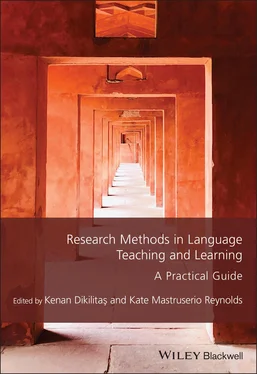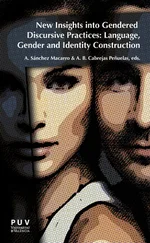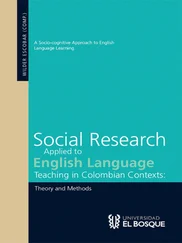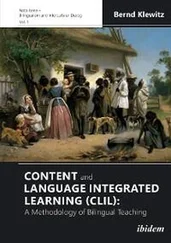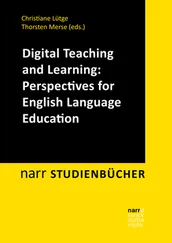Research Methods in Language Teaching and Learning
Здесь есть возможность читать онлайн «Research Methods in Language Teaching and Learning» — ознакомительный отрывок электронной книги совершенно бесплатно, а после прочтения отрывка купить полную версию. В некоторых случаях можно слушать аудио, скачать через торрент в формате fb2 и присутствует краткое содержание. Жанр: unrecognised, на английском языке. Описание произведения, (предисловие) а так же отзывы посетителей доступны на портале библиотеки ЛибКат.
- Название:Research Methods in Language Teaching and Learning
- Автор:
- Жанр:
- Год:неизвестен
- ISBN:нет данных
- Рейтинг книги:5 / 5. Голосов: 1
-
Избранное:Добавить в избранное
- Отзывы:
-
Ваша оценка:
- 100
- 1
- 2
- 3
- 4
- 5
Research Methods in Language Teaching and Learning: краткое содержание, описание и аннотация
Предлагаем к чтению аннотацию, описание, краткое содержание или предисловие (зависит от того, что написал сам автор книги «Research Methods in Language Teaching and Learning»). Если вы не нашли необходимую информацию о книге — напишите в комментариях, мы постараемся отыскать её.
Research Methods in Language Teaching and Learning
Research Methods in Language Teaching and Learning
Research Methods in Language Teaching and Learning — читать онлайн ознакомительный отрывок
Ниже представлен текст книги, разбитый по страницам. Система сохранения места последней прочитанной страницы, позволяет с удобством читать онлайн бесплатно книгу «Research Methods in Language Teaching and Learning», без необходимости каждый раз заново искать на чём Вы остановились. Поставьте закладку, и сможете в любой момент перейти на страницу, на которой закончили чтение.
Интервал:
Закладка:
In order to start the project on a sound ethical footing, therefore, once my own institution had assessed the project proposal and given its ethical approval for the study (reviewing an overview of its aims, methodology, consent processes, and documentation, and provision for the safe storage and appropriate use of data), the language school principal, teacher, and learners were approached through letters explaining the study’s rationale and its voluntary nature. Drawing on the conception of the classroom as a social environment, for the learners, the project’s goals were broadly summarized as “how working with others affects the way you learn in class,” while for the language school principal and teacher, this became the slightly more terminological “investigation of the social constraints, which exist on language learners in the language classroom.”
In the interests of both honesty and site entry, I highlighted to learners my friendship with their teacher, anticipating that if they liked him, this might assist in the practical development of the project. Yet is seems possible that the way in which I introduced the project to learners will have affected the data; ties between myself and the teacher may have hindered diarists’ honesty and openness. Meanwhile, although emphasizing that the project was voluntary, power imbalances between myself and the teacher on the one hand, and the learners on the other, meant that my request to participate in the diary study was unlikely to be rejected wholesale.
Consequently, the participants of the diary study were a British teacher and 12 upper-intermediate (Common European Framework of Reference for Languages [CEFR] B2 level) learners from a mainly German or Swiss-German L1 background. Most were female (the teacher was male) and aged between 20 and 30 years old, and data collection took place over a 4-week period. We shall return to participants, the differing ways in which individual diarists contributed to the study’s overall body of data, and what this means for the subsequent analysis, later in the chapter.
Designing the Diaries: Questions and Possibilities
We have already noted that there is no “optimal” or fixed format for ethnographic diaries, and thus, as Blommaert and Jie (2010, p. 10) note, “the process of gathering and molding knowledge is part of that knowledge; knowledge construction is knowledge; the process is the product ” (original emphasis). I was thus very aware that the way in which the diaries in my study were designed, as data collection tools, would affect the resultant data and subsequent analysis. Unlike personal diaries that many people keep in order to keep a “life-record” of their experiences, thoughts, and feelings, the diaries that my project’s participants would keep were “solicited,” that is, they were kept at my request and in the knowledge that I would read and analyze what was recorded. At the outset, therefore, I needed to consider, for example, how the diarists would deal with moments of embarrassment and difficulty in their accounts, how would they be truly open and honest, and how would they avoid simply pleasing the reader? Like most researchers engaged in diary studies, I needed to provide participants with guidelines in order to minimize the difficulties around these kinds of issues. Clearly, however, the provision of any guidelines, in addition to the diarists’ own knowledge that their accounts would be read, meant that their diaries had to be regarded as co-constructions by myself as the researcher and the participants as diarists (see also, Mackrill, 2008). A fundamental question when reflecting on the project, therefore, is “how did my research design affect the data?” (Hall, 2008, p. 119), and it is to this that the chapter now turns.
Structured or Unstructured Diaries?
A first key decision, therefore, was the extent to which the diaries should be structured or unstructured. Although ethnographic approaches aim to minimize the effects, disruptions, and distortions of the research process on participants’ experiences and understandings (Alaszewski, 2006, p. 78), the act of keeping a diary was, all the participants reported, a change in their behavior; none otherwise maintained a daily journal or record. Hence, a central tension was how to give the diarists control over what they recorded while recognizing my study’s own focus and goals; in other words, how to attain “relevant data without restricting [their] flow unnecessarily” (Mackrill, 2008, p. 8). Consequently, to what extent should diary entries be the participants’ own “free text” or be structured around a set of guidelines I might provide outlining what the diarists should record?
Thus, in an example of what Casanave (2017, p. 236) identifies as the “struggles, twists and turns” inherent in almost all research projects (but which are often smoothed over or overlooked in final publications), the guidelines to diarists in my study progressed from the former to the latter approach, developing and becoming slightly more structured during the early stages of data collection. Initially asking participants simply to record “anything you think was interesting,” this guidance became more focused at the request of the participants themselves, many of whom had felt slightly lost in the array of possible topics they might document (an example of the diarists themselves shaping the research; see above, “Finding Participants”). Consequently, I asked the participants to record events that stood out most during lessons and why they remembered them, and to talk about what I, as a researcher-observer in the classroom, “could not see, for example, what really goes on in pair work.” Although the diaries remained “open in structure, and informal” (Alaszewski, 2006, p. 78), the data subsequently became more immediately relevant to my research aims and objectives. The diary guidelines can therefore be understood as being as rather similar to interview guides, potentially creating a “dialogue” between the diarists and myself as the researcher (Mackrill, 2008), particularly as the diary entries formed the basis of the study’s follow-up interviews (see “Developing the Study” above). However, as noted at the start of this section, we should recognize that these guidelines inevitably affected, and are inseparable from, the collected data.
Recording the Diary Data
The exact design and format of the diaries participants keep in any diary study depend on the project’s goals, the kind of data subsequently required, and the expectations, abilities, and needs of the diarists themselves; as we have seen, every study is unique (Alaszewski, 2006). In my study, therefore, the range of possible formats needed to be navigated carefully in order to balance the aims and goals of the research with the needs and priorities of the participants, all the while attending to any further practical constraints on implementing the project.
In general, more structured approaches to the timing of participants’ diary keeping require them to record their experiences at either “interval-,” “signal-,” or “event-contingent” times: interval-contingent approaches require participants to update their diaries at regular, predetermined times throughout the study; signal-contingent designs contact diarists through a messaging service (e.g., a phone call or SMS), to ask them to record their experiences at that particular time; and event-contingent studies ask participants to report each time a specific event occurs (Bolger et al., 2003). Clearly, however, many studies, including ethnographic projects, are organized in less structured ways, encouraging diarists to record those experiences which they consider to be relevant, as and when they occur. Meanwhile, although paper-and-pen approaches remain the most familiar, and provide a format which matches the socially constructed expectations of many research participants, new technologies, both offline (e.g., digital cameras and handheld audio- or video-recorders) and online (e.g., recording via SMS or online platforms) now offer a range of alternatives in project design. Such technologies may appeal to more digitally literate participants or those with limited literacy. López-Gopar’s (2014) critical ethnography of the language classes of children from marginalized social groups in Mexico, for example, drew heavily on teacher-recorded photographs and video-clips to record the realities, as teachers saw them, of classroom life. Similarly, Block’s (1996) use of audio-diaries, in which participants could choose the language they wished to record in (i.e., as multilingual language users, one of their own languages or English, which they were learning), allowed diarists more control of the research process in accordance with their own needs, preferences, and strengths. The selection of audio-, video-, and other non-traditional formats for diary recording is therefore much more than a simple adjustment to or the accommodation of participants’ literacy constraints. Rather, they offer researchers’ participants new ways of making sense of language teaching and learning.
Читать дальшеИнтервал:
Закладка:
Похожие книги на «Research Methods in Language Teaching and Learning»
Представляем Вашему вниманию похожие книги на «Research Methods in Language Teaching and Learning» списком для выбора. Мы отобрали схожую по названию и смыслу литературу в надежде предоставить читателям больше вариантов отыскать новые, интересные, ещё непрочитанные произведения.
Обсуждение, отзывы о книге «Research Methods in Language Teaching and Learning» и просто собственные мнения читателей. Оставьте ваши комментарии, напишите, что Вы думаете о произведении, его смысле или главных героях. Укажите что конкретно понравилось, а что нет, и почему Вы так считаете.
